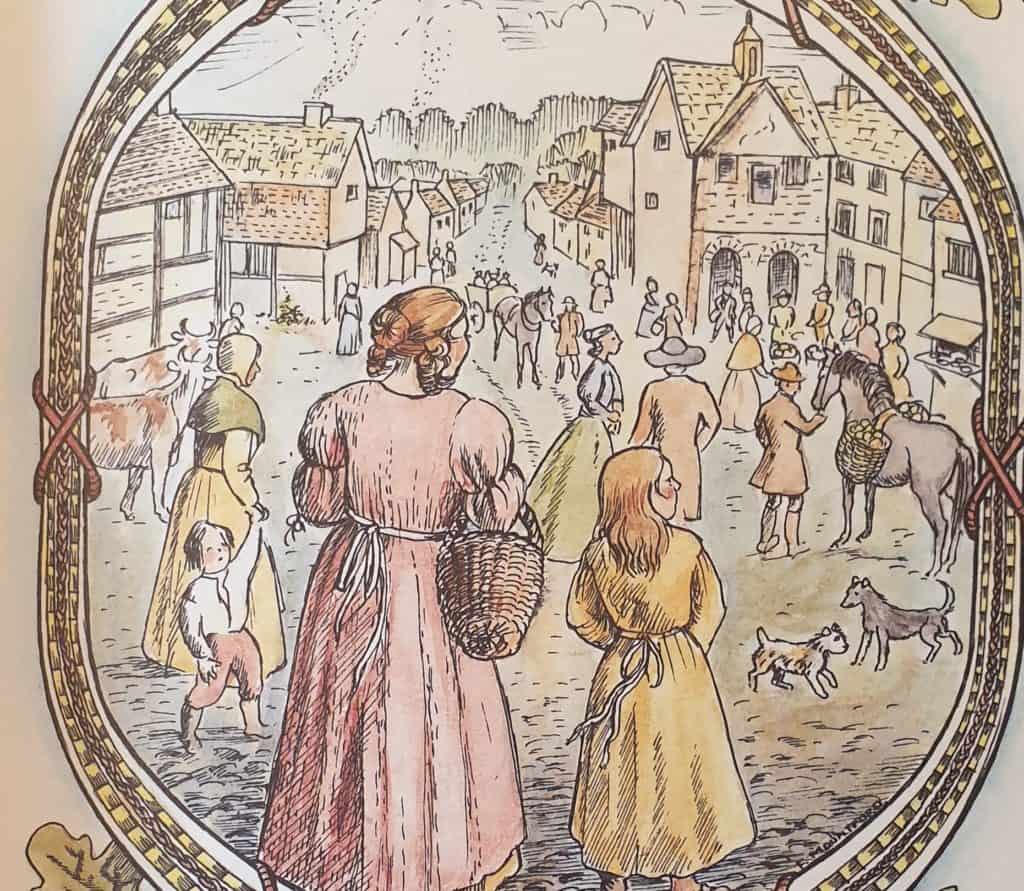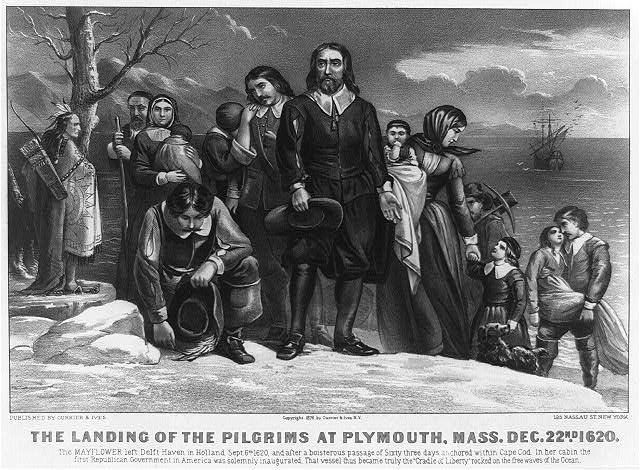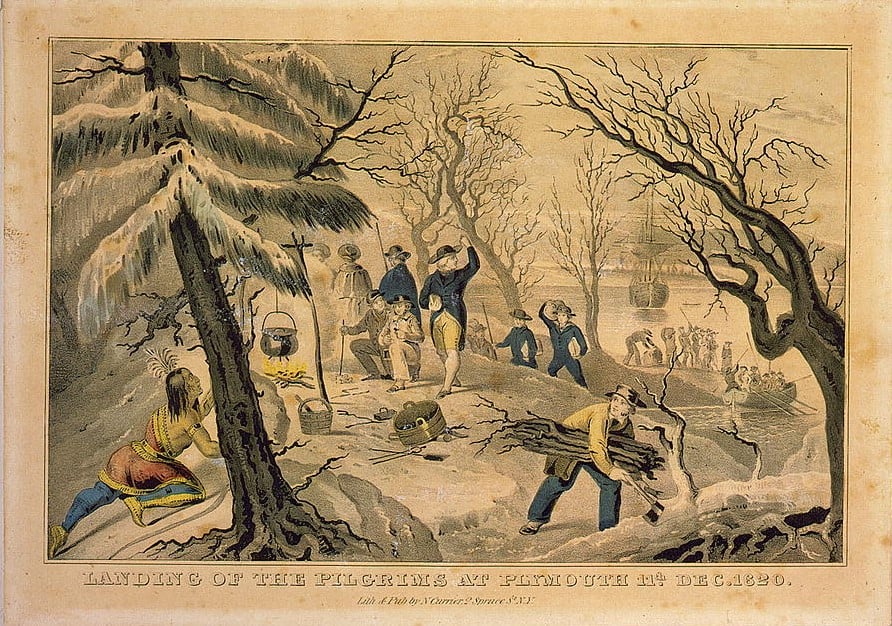
and 100 houses. Its street layout was the familiar Y shape that we know today.
In September 1620 the Mayflower set sail for Virginia. On board were six passengers from ‘Darking’, as the name was then spelled: shoemaker William Mullins, his wife Alice and children Priscilla and Joseph, their servant Robert Carter and weaver Peter Browne. Only two would survive to celebrate the first ‘Thanksgiving’. We look at the life they left behind.
Why do we mark the anniversary of the Mayflower?
The colony that the passengers founded was not the first European settlement in what became the United States. There had been Spanish settlements since the 1560s. Nor was it the first English settlement – Jamestown was settled 13 years earlier – and the Massachusetts Bay colony was more influential. We remember the Mayflower because Americans celebrate Thanksgiving every November, re-enacting the feast held by the Mayflower settlers in November 1621, when they had gathered in their first harvest.
Why has that feast become so significant in US history?
There were many different ‘thanksgivings’ in the early colonies. It was only in the 19th century that the New England tradition of celebrating the Mayflower party’s survival was promoted nationally in efforts to unify a country divided by the Civil War around a common origin story. The Protestant descendants of the original New England settlers were worried that their cultural importance and political power was waning. Mass immigration was bringing Jews and Catholics from Europe and the country was expanding westwards, absorbing swathes of Spanish-speaking Mexico. New Englanders promoted the story of the Protestant ‘Pilgrim Fathers’ as the nation’s wholesome founding myth and Thanksgiving as its unifying ritual – marginalising the histories of the recent immigrants, the Spanish speakers and the problematic southern slave states.
The story of the Mayflower was an appealing one that the whole nation could celebrate. Native Americans welcomed starving Europeans, helped them survive and joined them in a celebratory feast. Thanksgiving celebrates the harmonious co-existence of native people and Europeans. But the celebrated co-existence did not last. As more settlers arrived, the native people lost land and resources, leading to wars and brutal persecution.
The 400th anniversary has led to a re-examination of the more troublesome aspects of the Mayflower’s legacy. In the US the Plimoth Plantation has been renamed Plimoth/Patuxet in recognition of the fact that the story of the Mayflower is one of loss and exploitation as much as triumph over adversity.

Reconstruction by Frances Mountford

The ‘pilgrims’ land at Plymouth in December 1620 after a month
of trying to find a place to settle. This 19th century engraving depicts them smartly dressed after months in squalid and cramped conditions on board ship, wearing their best black clothes and buckled shoes. Children and the sick are being carried ashore; in fact, the passengers lived aboard the ship until the spring. Only the teenage Priscilla Mullins and Peter Browne survived the first year in the colony. Priscilla’s parents, brother and manservant had all died by the spring of 1621.
Photograph courtesy of the Library of Congress
This 19th century engraving depicts one of the native Wampanoag people observing the settlers arriving in Plymouth, which they called Patuxet. The Wampanoag people had already been ravaged by European diseases introduced by passing cod fishermen, whalers and fur trappers. ‘Squanto’, the Native American who taught the settlers how to survive, could speak English as he had been abducted and taken to Europe as a slave. The weakened Wampanoag entered into a mutually beneficial alliance with the settlers to ward off rivals but the arrangement did not last.
Engraving by N. Currier. Copyright : Library of Congress


1914 painting by Jennie A. Brownscombe.
Copyright : Library of Congress
An early 20th century imagining of the first Thanksgiving. In his account William Bradford, the colony’s second governor, recorded that in October 1621 the settlers brought in their first harvest and that 90 native Americans came to the three-day celebration of feasting and sport, bringing with them five deer. The ‘traditional’ turkeys, cranberries and pumpkins that are eaten at Thanksgiving today were introduced in the 19th century.
Next : Collars and Cuffs

